Human machine interface + robot in plastic production
- Details
- Hits: 7683
With a high degree of Automation provides the Rodinger plastics technology GmbH (RKT) ensures the required quality and economy in the production of various plastic parts for the automotive industry, electronics industry, communication technology and medical technology. The automation technology for the plastic injection molding machine comes from the Industry 4.0 specialist Mitsubishi Electric, including numerous 6-axis Robot RV-2FR and the Human machine interface (HMI) GOT2000.

Content of the user report:
 Hidden champions are companies that, with the exception of directly involved people and a few other exceptions, nobody knows, although they are absolutely leaders in their field. Rodinger Kunststoff Technik GmbH (RKT) is one of them Hidden Champion. Over 350 million injection molded parts are manufactured here with up to three plastic components on the machines, sometimes with a precision of 3 µm.
Hidden champions are companies that, with the exception of directly involved people and a few other exceptions, nobody knows, although they are absolutely leaders in their field. Rodinger Kunststoff Technik GmbH (RKT) is one of them Hidden Champion. Over 350 million injection molded parts are manufactured here with up to three plastic components on the machines, sometimes with a precision of 3 µm.
One of the most important fields of activity for RKT is Medical Technology. Exact, reproducible manufacturing conditions on the machine play a decisive role in the manufacture of medical technology products.
In a controlled, ISO8-like area of the production halls at RKT, the plastics experts manufacture parts for so-called pens, which are used to administer growth hormones. With regular therapy, patients with a relatively small body size can support their growth.
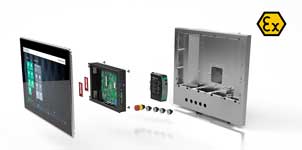 HMI platform for industrial operation and monitoring
HMI platform for industrial operation and monitoring
The automation used in these industrial production processes in the systems must be precise. RKT therefore relies on the to insert the pen caps previously produced on an injection molding machine into a pad printing cell R6-axis robot RV-2FR from Mitsubishi Electric from the small robot series. RKT is one of the first industrial users of this type.
Fully automatic robot removal cell
 “We have around a total of around our location 40 robots from Mitsubishi Electric in use, which we use in a wide variety of injection molding machines to remove the freshly injected plastic parts. Our previous experience with the different robot models has always been very good, ”explains Jonas Barke, automation process engineer at RKT. "When developing our two new pad printing cells, we wanted to rely on Mitsubishi Electric's tried and tested technology from the start."
“We have around a total of around our location 40 robots from Mitsubishi Electric in use, which we use in a wide variety of injection molding machines to remove the freshly injected plastic parts. Our previous experience with the different robot models has always been very good, ”explains Jonas Barke, automation process engineer at RKT. "When developing our two new pad printing cells, we wanted to rely on Mitsubishi Electric's tried and tested technology from the start."
A key reason for choosing the RV-2FR robot was its high level repeatability of ± 0,02 mm, recalls Jonas Barke: “The unprinted caps are made available via a Flexibowl conveyor plate. The position is recorded by an image processing system attached above.
After the image evaluation, the robot receives the position coordinates of a well-positioned cap, grabs it and then places it with a fixed orientation on the next free pin of the subsequent rotary indexing machine. The caps are then pretreated and printed on it. ”For error-free printing, there is little room for maneuver between the cap holder and the cap diameter. The robot must therefore transfer the plastic parts very precisely to the rotary transfer machine.
Robots with optimal range
Because the parts only weigh a few grams, the maximum load capacity of 2 kg of the RV-2FR is by no means exhausted. The maximum movement speed of 4950 mm / s is also not fully used in this system due to the cycle of 15 components / min.
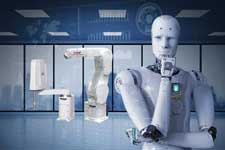 Predictive maintenance with artificial intelligence for robots
Predictive maintenance with artificial intelligence for robots
"When planning and realizing the robot feed cell with our system integrator, we were able to determine the dimensions so that we could reach all the necessary positions with the ideal reach radius of the robot of 504 mm," says the process engineer. "In combination with their high repeatability, the RV-2FR robots are perfect for us in this application."
Human machine interface - robot symbiosis
 In addition to the robot, there is also a HMI control unit of the type GOT2000 from Mitsubishi Electric integrated in the cell. It serves as a user interface or HMI (Human Machine Interface) to the robot.
In addition to the robot, there is also a HMI control unit of the type GOT2000 from Mitsubishi Electric integrated in the cell. It serves as a user interface or HMI (Human Machine Interface) to the robot.
The human-machine interface or the human-machine interface enables processes to be operated and the entire system to be started and stopped. "The interaction between robot and HMI is already integrated in the robot controller and enables intuitive setup and operation without a long training period for the human-machine interface," emphasizes Mr. Barke. "Here it pays off that these two key components of the cell come from one company."
 Smart maintenance: what influence does Industry 4.0 have?
Smart maintenance: what influence does Industry 4.0 have?
In addition to the technical features of the human-machine interface and robot, the Service from Mitsubishi Electric An important decision criterion for the RKT specialist: “The partner for system integration carried out special training for us on the possibilities of the robot and the HMI. Thanks to them, we were able to significantly reduce our training period. The support from Mitsubishi Electric was always prompt and very helpful in answering technical questions. ”The pad printing cell is economically worthwhile Andrew Persch, Head of Sales and Projects, with an amortization period of only 18 months.
6-axis robot with maintenance function
 With the introduction of the RV-2FR series, Mitsubishi Electric has the technical possibilities of its compact 6-axis robot raised to a new level. The basic model of this series already has an integrated, fully equipped controller and provides the user with numerous new options for Industry 4.0.
With the introduction of the RV-2FR series, Mitsubishi Electric has the technical possibilities of its compact 6-axis robot raised to a new level. The basic model of this series already has an integrated, fully equipped controller and provides the user with numerous new options for Industry 4.0.
The RV-2FR contains a number of maintenance functions. With them, for example, the wear on the axlemotors Detect early and optimize maintenance accordingly. Predictive maintenance or predictive maintenance improves considerably.
Tobias Lausman supports RKT as the sales contact for Mitsubishi Electric. He sees another strength in the RV-2FR's ability to be easily integrated into various automation systems: “In the pad printing cell at RKT, the Flexibowl, the image processing system and the rotary indexing machine are built into several systems with which the robot must communicate.
The RV-2FR masters this requirement with flying colors due to its numerous interface options. ”Jonas Barke also sees the implementation of the cell as problem-free because the associated software with the experience with robots at RKT as well as quick training through implementation automation allowed.
Numerous applications thanks to high mobility

The Robot type RV-2FR are loud Tobias Lausman because of your exceptional mobility ideal for high-precision applications in the smallest of spaces. Examples of this can be found in assembly or assembly, palletizing or sorting as well as in gluing processes. Here the RV-2FR can fully demonstrate its speed and accuracy.
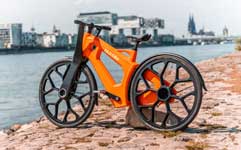 Plastic recycling from and for industry and other uses
Plastic recycling from and for industry and other uses
"At RKT, I see many more opportunities for using various Mitsubishi Electric robots," emphasizes the process engineer Jonas Barke. "Reliability and economy over the entire life cycle are the decisive arguments for us to continue working with Mitsubishi Electric."
You might also be interested in...
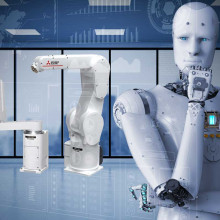
Predictive maintenance for robotics, machines and systems
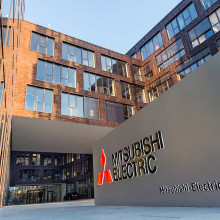
Mitsubishi Electric | Automating the World
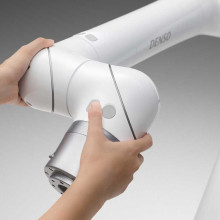
Cobot | Discover collaborative robots as a new employee

Intelligent CNC control for machine tools
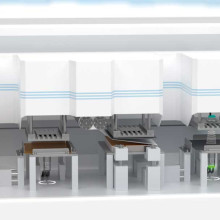
battery production | Facts and Technologies
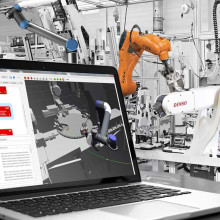
Programming Robots | software and controls

Peter Stiefenhöfer is a freelance editor and business owner PS Marcom Services, Olching.
